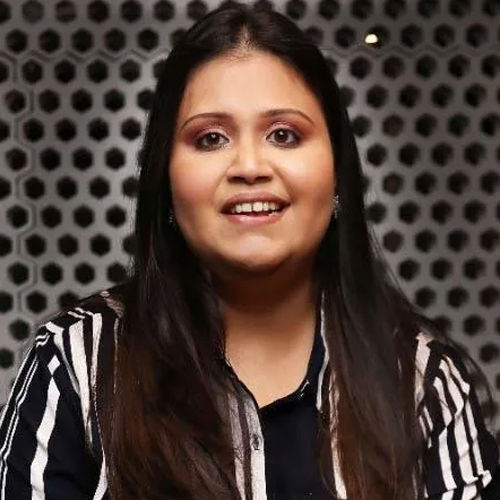
Purvi Rohit
Designer
Label - Not So Pink
We aim to break the shackles of gender stereotypes & empower women
Not So Pink is a fashionable western workwear brand by Purvi Rohit that delivers contemporary, yet comfortable apparel and accessories made exclusively for the Indian body type, for them to be the most confident, bold, and classy versions of themselves. In an interview with Fibre2Fashion, the designer talks about her brand and its purpose and shares her thoughts on evolving Indian fashion.
Fibre2Fashion: What attracted you towards the fashion industry and motivated you to come up with a label based on workwear?
Purvi Rohit:
Having had an experience in the fashion and textile industry, I have always had a penchant for coming up with creative designs that blend Indian aesthetic sensibilities with western wear.
F2F: What does the name ‘Not So Pink’ suggest?
PR:
‘Not So Pink’ is not just a formal apparel brand, it is an attitude, a movement! Through Not So Pink we aim to break the shackles of gender stereotypes and empower women through crafting a line of fashion-forward workwear that represents the atypical, confident, classy and sassy power woman of today. At work and otherwise, the first form of communication occurs without actually speaking. It is through the person’s outfit that others form a perception of them. Not So Pink represents the working woman of today who is confident to take on the world, and it reflects in the clothing and accessories.
F2F: How would you define the aesthetics of your collection?
PR:
The USP of Not So Pink entails in the fact that the outfits have been crafted to blend westernwear with Indian aesthetic sensibilities. Whether it’s a basic shirt or trendy skirt with a slit; it has been designed in a way that it looks elegant and classy while also looking stylish.
F2F: Where do you get your creative nutrition? What fashion do you follow?
PR:
F2F: With so many fashion brands coming into the picture, what makes your label stand out?
PR:
We are a ‘fashion conscious western formal brand for women’ and we aim to keep living up to our intended thought behind Not So Pink.
F2F: What does sustainability mean to you and how do you include it in your creations?
PR:
While we do acknowledge that the fashion industry takes a significant chunk of the blame for causing environmental problems, we also have to realise the positively changing scenario. With Not So Pink, we try to incorporate sustainability into the making of the products. By using PET bottles and recycled yarns as well as creating mill-processed fabrics, we are trying to create environmentally safe products.
F2F: How would you illustrate fashion in India and how has the same evolved over the years?
PR:
India’s fashion is reflective of the coexistence among its diverse cultures. Today, Indians try to incorporate the traditional with the fashion of the West. We can see a unique balance of the ethnic fused with the modern trends among the youth. There is a rise of multiculturalism in fashion as well which makes it culturally richer.
F2F: What are the top 5 workwear wardrobe essentials every woman should have?
PR:
A woman’s workwear must have trousers that fit comfortably. Her workwear must include a pair of monochromatic shirts which looks simple yet elegant. Other essentials include a skirt, a blazer and a little black dress. These 5 items should be carefully styled, or they can turn a professional look into an informal one instantly.
F2F: What advice would you share with young designers trying to break into fashion?
PR:
Young designers must realise that the fashion industry is a fiercely competitive space. They should take time to conceptualise their styles into reality. Be patient and understand your abilities, study the trends and do good market surveys. Lastly, keep developing your creativity and take every opportunity you think is worth it.

Rahul Mehta
Anurag Batra
Abhay Gupta
Arun Sirdeshmukh
Bill D’Arienzo
Gabi Seligsohn
Pradip Mehta
Rahul Mehta
Fanny Vermandel
Aseem Prakash


20230103183907.png)







_8.JPG)


